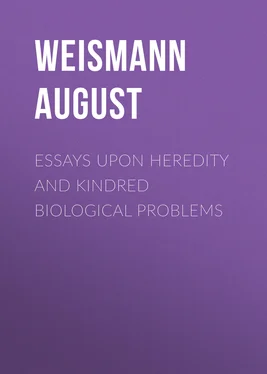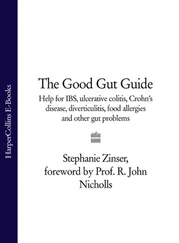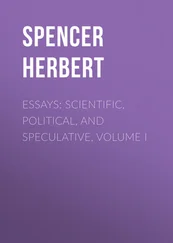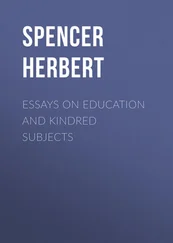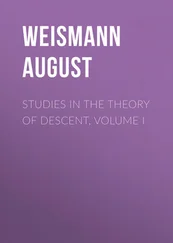August Weismann - Essays Upon Heredity and Kindred Biological Problems
Здесь есть возможность читать онлайн «August Weismann - Essays Upon Heredity and Kindred Biological Problems» — ознакомительный отрывок электронной книги совершенно бесплатно, а после прочтения отрывка купить полную версию. В некоторых случаях можно слушать аудио, скачать через торрент в формате fb2 и присутствует краткое содержание. Жанр: foreign_antique, Биология, на английском языке. Описание произведения, (предисловие) а так же отзывы посетителей доступны на портале библиотеки ЛибКат.
- Название:Essays Upon Heredity and Kindred Biological Problems
- Автор:
- Жанр:
- Год:неизвестен
- ISBN:нет данных
- Рейтинг книги:5 / 5. Голосов: 1
-
Избранное:Добавить в избранное
- Отзывы:
-
Ваша оценка:
- 100
- 1
- 2
- 3
- 4
- 5
Essays Upon Heredity and Kindred Biological Problems: краткое содержание, описание и аннотация
Предлагаем к чтению аннотацию, описание, краткое содержание или предисловие (зависит от того, что написал сам автор книги «Essays Upon Heredity and Kindred Biological Problems»). Если вы не нашли необходимую информацию о книге — напишите в комментариях, мы постараемся отыскать её.
Essays Upon Heredity and Kindred Biological Problems — читать онлайн ознакомительный отрывок
Ниже представлен текст книги, разбитый по страницам. Система сохранения места последней прочитанной страницы, позволяет с удобством читать онлайн бесплатно книгу «Essays Upon Heredity and Kindred Biological Problems», без необходимости каждый раз заново искать на чём Вы остановились. Поставьте закладку, и сможете в любой момент перейти на страницу, на которой закончили чтение.
Интервал:
Закладка:
(2) ‘The Succineae are mostly biennial; Succinea putris probably triennial. Fertilization takes place from June till the beginning of August, and the young develope until the autumn. Succinea Pfeifferi and S. elegans live through the winter, and the fact is proved by very distinct annual markings. Reproduction takes place in July and August of the following year, and they die in the autumn. They continue to grow until their death.’
(3) ‘The shells of our native species of Pupa , Clausilia , and Bulimus (with the exception of Bulimus detritus ) show but faint annual markings. They can hardly require more than two years for their complete development. The great number of living individuals with full-sized shells belonging to these genera, as compared with the number which possess smaller shells, makes it probable that these animals live in the mature condition longer than our other Helicidae . I have always found full-sized shells present in at least two-thirds of the individuals of these genera characterized by much-coiled shells—a proportion which I have never seen among our larger Helicidae . Nevertheless direct observations as to the length of life in the mature condition are still wanting.’
(4) ‘The Helicidae live from two to four years; Helix sericea , H. hispida , two to three years; H. hortensis , H. nemoralis , H. arbustorum , as a rule three years; H. pomatia four years. Fertilization is not in these species strictly confined to any one time of year, but in the case of old animals takes place in the spring, as soon as the winter sleep is over; while in the two-year-old animals it also happens later in the summer.’
(5) ‘The Hyalineae are mostly biennial: they seldom live three years, and even in the largest species such an age is probably exceptional. The smallest Hyalineae and Helicidae live at most two years. The length of life is dependent upon the time at which the parents are fertilized, for this decides whether the young begin to shift for themselves early in the summer or later in the autumn, and so whether the first year’s growth is large or small.’
(6) ‘The species of Limnaeus , Planorbis , and Ancylus live two to three years, that is they take two to three years to attain the full size. L. auricularis is mostly biennial, L. palustris and L. pereger two to three years: I have found that the latter, in the mountains at Oberstorf in the Bavarian Alps, may exceptionally attain the age of four years, that is, it may possess three clearly defined annual markings, whilst the specimens from the plain never showed more than two.’
(7) ‘The Paludinidae attain an age of three or four years.’
(8) ‘The smaller bivalves, Pisidium and Cyclas , do not often live for more than two years: the larger Najadae , on the other hand, often live for more than ten years, and indeed they are not full grown until they possess ten to fourteen annual markings. It is possible that habitat may have great influence upon the length of life in this order.’
‘ Unio and Anodonta become sexually mature in the third to the fifth year.’
As far as I am aware but few statements exist upon the length of life in marine mollusca, and these are for the most part very inexact. The giant bivalve Tridacna gigas must attain an age of 60 to 100 years 23. All Cephalopods live for at least over a year, and most of them well over ten years; and the giant forms, sometimes mistaken for ‘sea-serpents,’ must require many decades in which to attain such a remarkable size. L. Agassiz has determined the length of life in a large sea snail, Natica heros , by sorting a great number of individuals according to their sizes: he places it at 30 years 24.
I am glad to be able to communicate an observation made at the Zoological Station at Naples upon the length of life in Ascidians . The beautiful white Cionea intestinalis has settled in great numbers in an aquarium at the Station, and Professor Dohrn tells me that it produces three generations annually, and that each individual lives for about five months, and then reproduces itself and dies. External conditions accounting for this early death have not been discovered.
It is known that the freshwater Polyzoa are annual, but it is not known whether the first individuals produced from a colony in the spring, live for the whole summer. The length of life is also unknown in single individuals of any marine Polyzoon.
Clessin’s accurate statements upon the freshwater Mollusca, previously quoted, show that a surprisingly short length of life is the general rule. Only those forms of which the large size requires that many years shall elapse before the attainment of sexual maturity, live ten years or over ( Unio , Anodonta ); indeed, our largest native snail ( Helix pomatia ) only lives for four years, and many small species only one year, or two years if the former time is insufficient to render them sexually mature. These facts seem to indicate, as I think, that these molluscs are exposed to great destruction in the adult state, indeed to a greater extent than when they are young, or, at any rate, to an equal extent. The facts appear to be the reverse of those found among birds. The fertility is enormous; a single mussel contains several hundred thousand eggs; the destruction of young as compared with the number of eggs produced is distinctly smaller than in birds, therefore a much shorter duration of the life of each mature individual is rendered possible, and further becomes advantageous because the mature individuals are exposed to severe destruction.
However it can only be vaguely suggested that this is the case, for positive proofs are entirely absent. Perhaps the destruction of single mature individuals does not play so important a part as the destruction of their generative organs. The ravages of parasitic animals ( Trematodes ) in the internal organs of snails and bivalves are well known to zoologists. The ovaries of the latter are often entirely filled with parasites, and such animals are then incapable of reproduction.
Besides, molluscs have many enemies, which destroy them both on land and in water. In the water,—fish, frogs, newts, ducks and other water-fowl, and on land many birds, the hedgehog, toads, etc., largely depend upon them for food.
If the principles developed in this essay apply to the freshwater Mollusca, we must then infer that snails which maintain the mature condition—the capability of reproduction—for one year, are in this state more exposed to destruction from the attacks of enemies than those species which remain sexually mature for two or three years, or that the latter suffer from a greater proportional loss of eggs and young.
Note 6. Unequal Length of Life in the two Sexes
This inequality is frequently found among insects. The males of the remarkable little parasites infesting bees, the Strepsiptera , only live for two to three hours in the mature condition, while the wingless, maggot-like, female lives eight days: in this case, therefore, the female lives sixty-four times as long as the male. The explanation of these relations is obvious; a long life for the male would be useless to the species, while the relatively long life of the female is a necessity for the species, inasmuch as she is viviparous, and must nourish her young until their birth.
Again, the male of Phylloxera vastatrix lives for a much shorter period than the female, and is devoid of proboscis and stomach, and takes no food: it fertilizes the female as soon as the last skin has been shed and then dies.
Читать дальшеИнтервал:
Закладка:
Похожие книги на «Essays Upon Heredity and Kindred Biological Problems»
Представляем Вашему вниманию похожие книги на «Essays Upon Heredity and Kindred Biological Problems» списком для выбора. Мы отобрали схожую по названию и смыслу литературу в надежде предоставить читателям больше вариантов отыскать новые, интересные, ещё непрочитанные произведения.
Обсуждение, отзывы о книге «Essays Upon Heredity and Kindred Biological Problems» и просто собственные мнения читателей. Оставьте ваши комментарии, напишите, что Вы думаете о произведении, его смысле или главных героях. Укажите что конкретно понравилось, а что нет, и почему Вы так считаете.
